The Ancient Harps
The harp has been around for a long time, some 4000 years or so. It's use dates back to pre-ancient times in Mesopotamia and later Egypt. From there, the harp spread into Greece and Rome. Nobody knows who exactly invented the instrument. In later ancient and Medieval times the harp was known to accompany the moods of King David, a renowned multi-instrumentalist who owned several harps of his own.
The harp has traveled the world over as a beloved and popular instrument of ensembles, soloists, and the orchestra. The harp made its way into the hands and heart of many in the Celtic folklore of the Irish and Welsh. It has been a long term use, then and now, across England, Europe, Greece, France, Egypt, Africa, Asia, and Latin America. Even Ireland's coat of arms carries a pictured harp.
The Orchestral Harp
It was bound to happen being around for so long. The harp found its place in the 18th century opera house making it first appearance in the symphony orchestra with Hector Berlios' Symphonie Fantastique in 1830. Just after joining the symphony orchestra's repertoire, English composer and harpist Elias Parish Alvars was the first known real exponent of the harp exploiting its potential during the early 19th century.
While the harp remains a stringed instrument, it has been accompanied by the melodic sounds of its cousins the lute, lyre, Celtic harp (a smaller version), and mandolin. One interesting note is that the harp seems to attract mostly female musicians. I would guess it's mellow tones and haunting strums are what draws it more into the feminine spirit than men who seem to take appeal for the more masculine appearing and sounding instruments such as brass, bass, or percussion. I suspect the harp is one of those melodic and harmonic tools that will be with us forever. No other instrument whose tones and sound can touch the human soul like the harp. Right: A harp once owned by George IV . circa 1800s
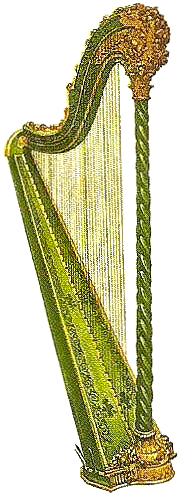
Diagram of the Harp
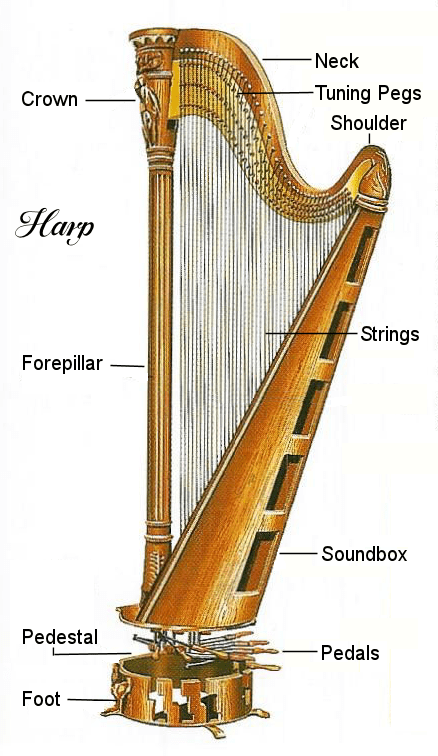
Use of the Harp
The harp player may perform seated or standing, positioning the instrument between the knees when seated and standing behind the instrument just to its left. It stands on the floor on its feet and pedestal. It may be played from the left or right side.
The lower pitched strings are closest to the forepillar while the higher pitched tones come from up near the harp's lower neck and shoulder.
The player leans into the harp using the right hand to pluck or strum the higher treble notes and the left hand takes care of the lower bass notes, or vica versa from the opposite side; the harpist decides on the fly.
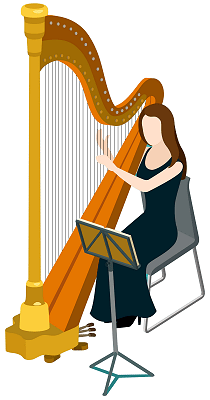
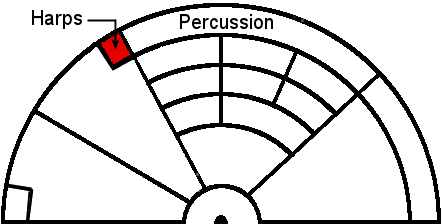
Where in the Orchestra?
The harp is seated to the rear of the orchestra behind the 2nd violins, left of the percussion section.
'Má vlast' w/ 'Vltava' (The Moldau)
Performed by Valeria Milot 2012 . Composed by Bedřich Smetana 1874-79
Noteworthy Harp Players
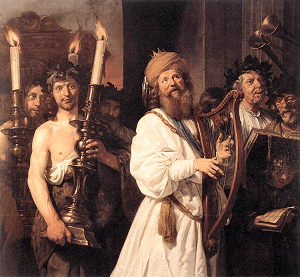
King David
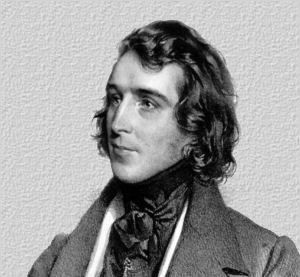
Elias Parish Alvars
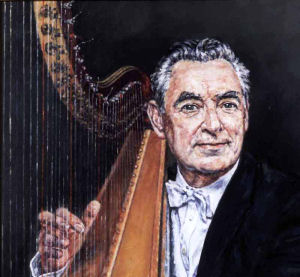
Osian Ellis
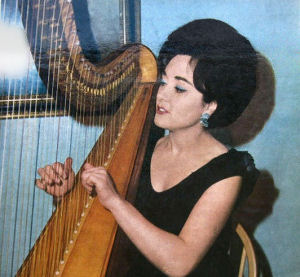
Marissa Robles


